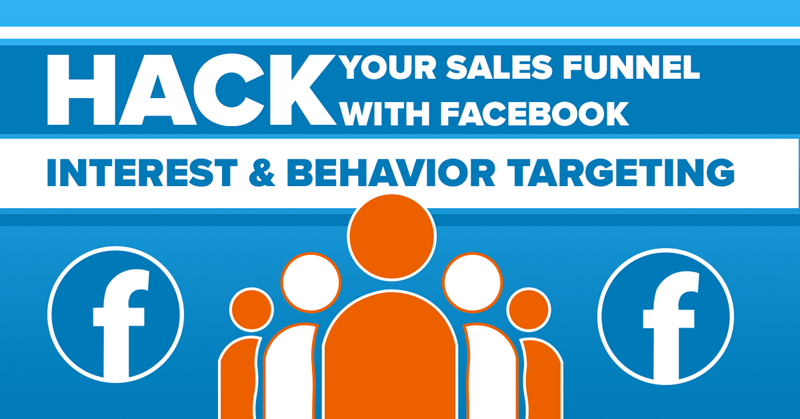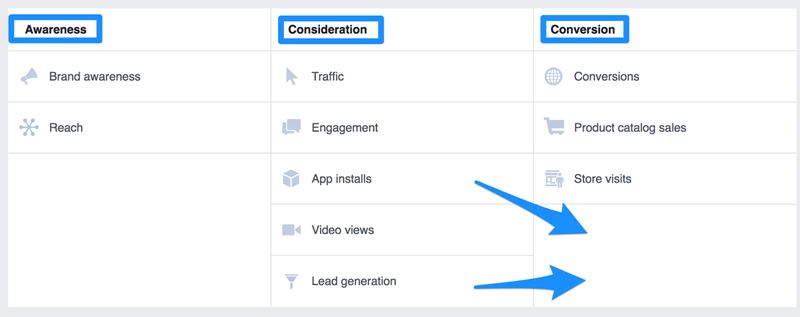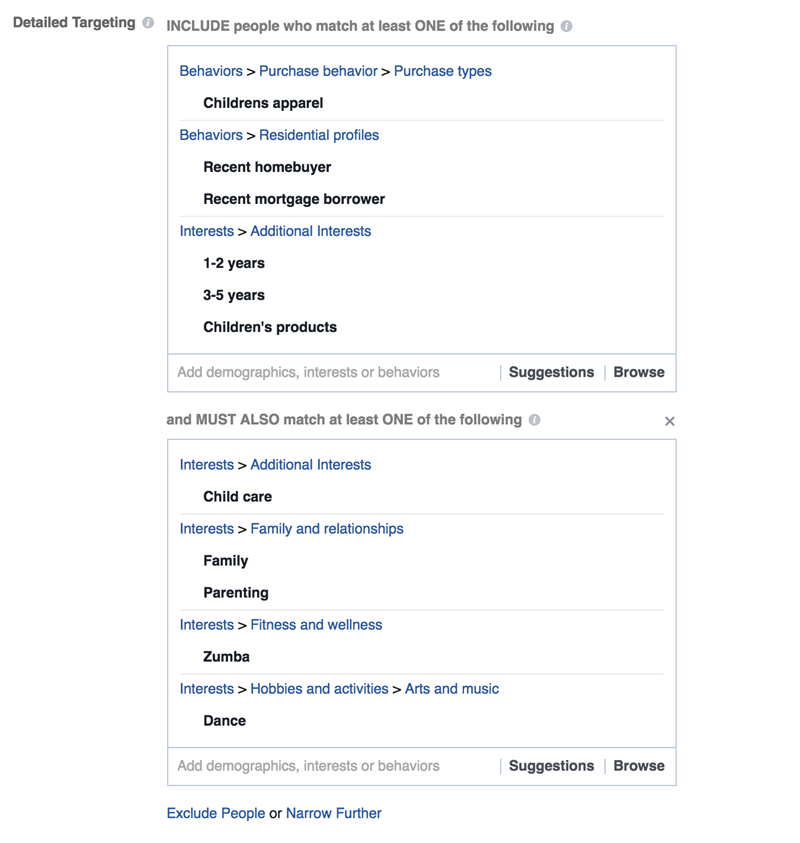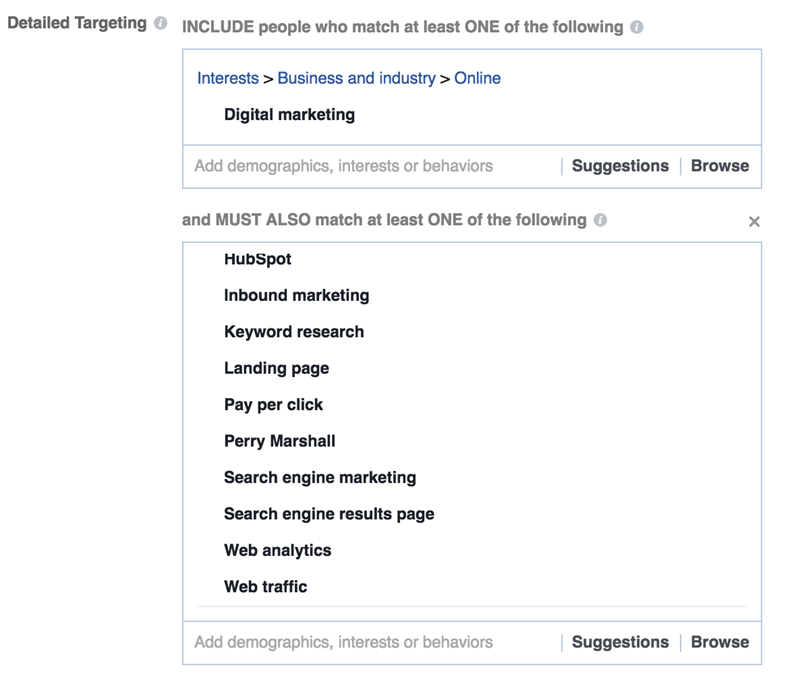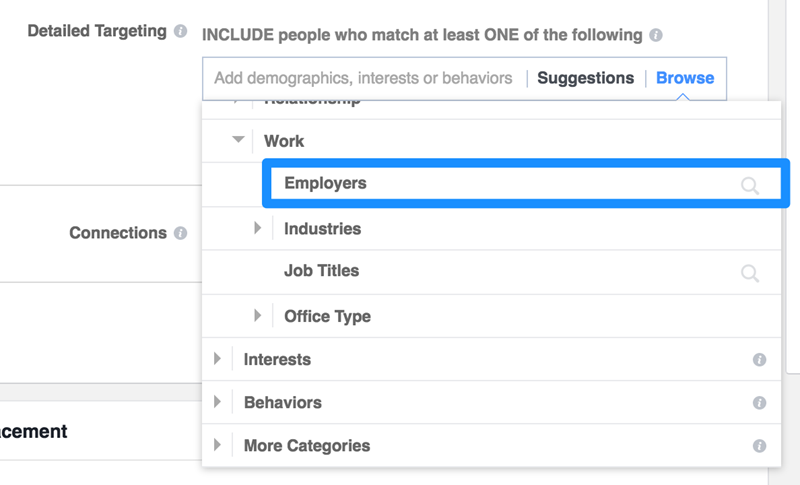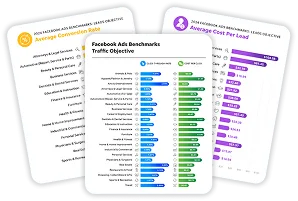
Did you know Facebook is the perfect platform for acquiring and nurturing new prospects, while also engaging your existing customers?
It’s true. The ideal strategic approach to advertising on Facebook is simple:
- Identify prospects using advanced targeting methods (like interests and behavior)
- Nurture website visitors and custom audiences using remarketing
- Build lookalike audiences based on your remarketing lists to fill your funnel with more qualified leads
Lookalikes
However, for many new and smaller businesses, the option to build complex remarketing funnels just isn’t realistic to start. You don’t have enough traffic yet.
Not having a pre-existing database of leads also makes the prospect of rendering great Facebook lookalike audiences nearly impossible.
If you find yourself in one of these scenarios, what do you do?
The answer? Manual targeting. That means getting your hands dirty and constructing your best Facebook audiences from the ground up.
Now, there’s nothing wrong with having to build Facebook audiences from scratch: it’s just a little tricky. In this post, I’ll show you how manual targeting methods can be equally as effective as other targeting options available on Facebook, and the proper way to approach their creation and management.
How to Build Your Facebook Audiences Based on Objectives
The act of building out manually targeted audiences in Facebook is daunting and, without experience under your belt, can be difficult to execute without a hitch. That being said, there is a systematic approach that can be taken when building out audiences from scratch.
The first question you should answer for each campaign is: “What is my objective?”
There are multiple campaign objectives in Facebook, and each provides its own form of value to you, the advertiser. Although your audience should always align with your target demographic, the campaign objectives from left to right correlate to how refined that audience should be.
Here are the three types of Facebook campaign objective:
- “Awareness” campaign objectives allow for you to have the broadest audiences because your goal is simply to generate awareness for your brand and business.
- “Consideration” campaign objectives should be more refined than the awareness type, because you want the audience to actually engage with your ads or at least produce some type of result.
- “Conversion” campaign objectives should be as refined as possible because you want to produce results within a Cost per Acquisition framework (App installs and Lead Generation are more or less conversion campaigns by nature).
Understanding the relationship between campaign objective and audience size is the essential foundation for manual audience building. Once you can conceptualize how broad or how refined an audience should be, the rest of the process is a cakewalk.
How to Structure Your Facebook Audiences for Broader Objectives
With broad objectives (awareness and consideration) you have the liberty to be less strict with your targeting. With that being said, unless you’re selling fidget spinners, I wouldn’t suggest targeting everyone from the ages of 18 – 65+ with an interest in automatic doors and Dwayne “the Rock” Johnson.
You still want to take a systematic approach that is business-centric. Remember that regardless of the campaign objective in Facebook, you still want these individuals to have a high propensity to turn into customers at some point.
Let’s say, for example, you run a local dance school and want to generate brand awareness within your community:
With all other targeting parameters in place (i.e. location, age etc.) this brand awareness campaign will be able to cast a wider net while also being relevant to the business. Individuals whose interests fit within these categories (choreography, street dance, physical fitness, etc.) will likely have some type of positive reaction to an ad for a dance school, whether it is simple intrigue or engagement.
Using Facebook Interest Targeting with More Refined Campaign Objectives
There are two primary concepts or approaches when it comes to manually constructing your audiences.
The first is Core-to-Broad, which essentially means taking the most definitive characteristics of your target audience and building it out from there. The other, Broad-to Core, is basically the reverse of that, where you would start very broad in interest and behaviors and add layers of required characteristics that ultimately refine the audience down.
Here are the scenarios in which each strategy is most effective.
Strategy 1: Core-to-Broad
Continuing with the dance school example, let’s say that you want to refine your audience a bit so you know that a higher level of in-market qualification is being met. For a campaign that aims to significantly drive “qualified” traffic to the business’s website, you could take this approach:
Given that this is a local business, I elected to start with the core attributes of the target audience; we want to get a definitive profile of those who are in the desired location radius and who are demographically in-market for the service. These details are about who the audience “is” rather than what the audience is “interested” in. This is important because the strategy is based on characteristics that are more defining to them as individuals.
After that, I included another layer of targeting that requires Facebook to file those individuals down to those who fit within the interests and behaviors that are contextually relevant to the business.
This strategy is effective because it takes the pre-qualified audience and filters it down to individuals who will have a higher probability to be interested in the business.
These details are crucial when it comes down to overall engagement and relevance score, but also their propensity to click-through to the website. I often use this strategy when I am dealing with local business or ones with very low budgets. We can get this audience size relatively small and relevant, effectively spend a low budget on it for a period of time.
Strategy 2: Broad-to-Core
Alternatively, you can begin with broad interests and file them down into specific subsets based on defining behaviors and qualities. The reasoning for taking this approach primarily has to do with building a large, broad audience with members who share a common interest, then refining it to a size and profile that fits your campaign goals.
This approach is generally used when there isn’t a common thread of behaviors or demographic qualities that tie the entire group together. Instead, the filing down of interests or a collection of interests is what is important here.
Let’s take the example of a company that provides PPC software for digital marketers (far-fetched, right?). Here’s what that might look like:
The audience that comprises a digital marketing interest is about 39,764,000 people. Taking that audience and refining it to require at least one of the subsequent topics reduced that audience size to 7,700,000 people.
This is still a large audience, but if the goal is to promote blog content that is tangentially related to these topics of interest, then we increase the probability that those who are exposed to our content might actually be interested in it.
More Ways to Use Facebook Interests to Find More Qualified Prospects
Competitor targeting
If there are some larger fish in the pond in which you do business, use them to your advantage.
You can very simply target individuals who are interested in these companies. Your strategy from a promotional standpoint is an entirely different story altogether, but at least you know your ads are being served to individuals you are fairly certain are in-market for your business.
Account-based targeting
You can also take somewhat of an account-based marketing approach by targeting individuals who work for specific companies and have specific job titles within those companies that would be valuable to you (similar to this recruiting strategy).
To do this: select browse within the “Detailed Targeting” field. Then select “Demographics” from the drop-down.
Then scroll down and select “work”:
Then select “Employers”:
From there you will be able to search available employers whose employees you can target.
Which Behavior Targeting Strategy Is Best for You?
Unfortunately, the only way for you to truly know which strategy will work best for you is to test them all and optimize accordingly.
The positive result of all this hard work is that your audience-definition efforts will ultimately help you to build that ever-elusive remarketing pool that you desired in the first place. It allows you to market your business without any pre-requisites and hopefully allows you to build upon your successes.
If you are running a lead gen or conversions objective campaign (more tips on Facebook account structuring here), then you will be able to build lookalike audiences of those who converted, thus making the process of building and finding new audiences easier over time.

